NBA sleepers in the NCAA tournament

NBA teams are fighting for playoff spots and jostling for home court advantage, but for the next few weeks, the college game will take center stage. Pro fans tuning into the NCAA tournament may scoff at the low level of play—and even lower scores—but if you aren’t pulling for any team in particular, focus on the players who could populate NBA rosters next year. Brandon Ingram and Jaylen Brown are familiar names, but there are plenty of guys who have flown under the radar that could receive plenty of buzz in the lead up to the draft this summer. In compiling a list of 10 “sleeper” prospects, SI.com did not discriminate based on program size or prestige. The only requirement is participation in this year’s tourney.
MORE NBA: SHARP: SI.com Mock Draft 1.0 | NCAA Bracket Challenge
DeAndre Bembry
School: Saint Joseph’s
Class: junior
Height/weight: 6’6’’/210 lbs
Position: small forward
SI.com Mock Draft 1.0: N/A
Bembry is sort of like that Indie band that has only a small group of admirers until they go mainstream. Atlantic 10 devotees knew Bembry was good back when he was one of two players to earn the conference’s Rookie of the Year award in 2014. He kept getting better. As a sophomore, Bembry averaged 18.3 points, 8 rebounds and 3.7 assists per 40 minutes, adjusted for pace, and logged the third highest percentage of minutes (95) in the country. Then, after two seasons of shining in a small league and largely eluding the national spotlight, Bembry more than held his own against other highly regarded prospects last summer at the Nike Basketball Academy.
He’s continued to round out his game this season while leading Saint Joseph’s to only its second NCAA Tournament berth since 2008. Against conference competition Bembry connected on 56.3% of his twos, assisted on more than a fourth of his team’s buckets, grabbed 19.3% of opponents’ misses and drew 4.5 fouls per 40 minutes. Bembry’s shaky perimeter shooting (62.1% from the free throw line and 31% from beyond the arc during his college career) is a concern, but he can help an NBA team with his offensive versatility.
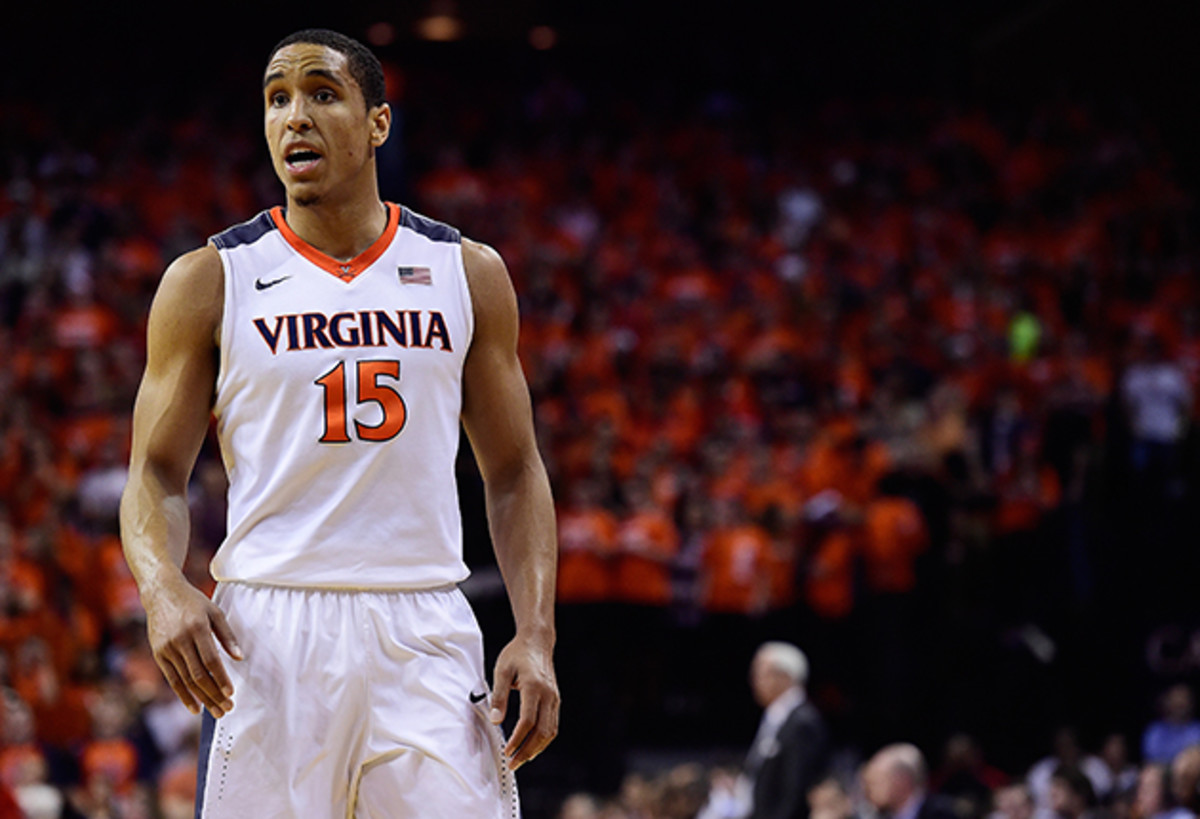
Malcolm Brogdon
School: Virginia
Class: senior
Height/weight: 6’5’’/215 lbs
Position: shooting guard
SI.com Mock Draft 1.0: 19
What? How can Brogdon be a sleeper after winning the Atlantic Coast Conference Player of the Year award, leading Virginia to its third consecutive 25-plus win season and being named a second-team All-America by SI? Because of the apparent belief that his performance won’t translate at the next level. You won’t find Brogdon in the first round of most mocks, but expect that to change once teams get a closer look at him in the lead up to the draft. For one, Brogdon is a strong defender who can check players at multiple positions. Since redshirting in 2012–13, Brogdon finished in the top five in the ACC in Defensive Win Shares in three consecutive seasons, and the Hoos never ranked lower than fifth in adjusted defensive efficiency.
But Brogdon can do a lot more than prevent points; he’s become better at scoring them. This season Brogdon is posting career-highs in free throw percentage and three-point percentage while shouldering his biggest possession load yet (27.1%) and recording the ACC’s second-highest True Shooting Percentage during league play. Plus, Virginia’s offense craters when Brodgon sits; against ACC opponents in the 2015–16 regular season its scoring average dipped from 1.14 points per possession to 0.86.
Deyonta Davis
School: Michigan State
Class: freshman
Height/weight: 6’10’’/240 lbs
Position: center
SI.com Mock Draft 1.0: 11
One of the defining storylines of this college basketball season is the debate over whether Oklahoma’s Buddy Hield or Michigan State’s Denzel Valentine should be named college basketball’s National Player of the Year. Valentine could be the best player in the country, but he’s probably not even the best NBA prospect on his own team. That would be Davis, a freshman who could be taken in the lottery if he declares despite assertions that he’s not prepared for the pros. Davis provides one of the key elements required to craft a viable lineup: rim protection. During Big Ten play this season he swatted 10.1% of opponents’ two-point field goal attempts, which led the conference.
Davis is also a voracious rebounder, grabbing 10.6% of Michigan State’s misses and 21.6% of its opponents’ in conference play, good for 12th and sixth in the Big Ten, respectively. Davis’s scoring repertoire is limited (more than 61% of his shots have come at the rim), he hasn’t played that much (only 46.4% of available minutes), and he’s committed a lot of fouls (more than five per 40 minutes during conference play), but there’s a lot to like about his potential as a shot-deterring five who can corral misses and finish from close range.
• MORE NBA: The Island of Kawhi: No points allowed
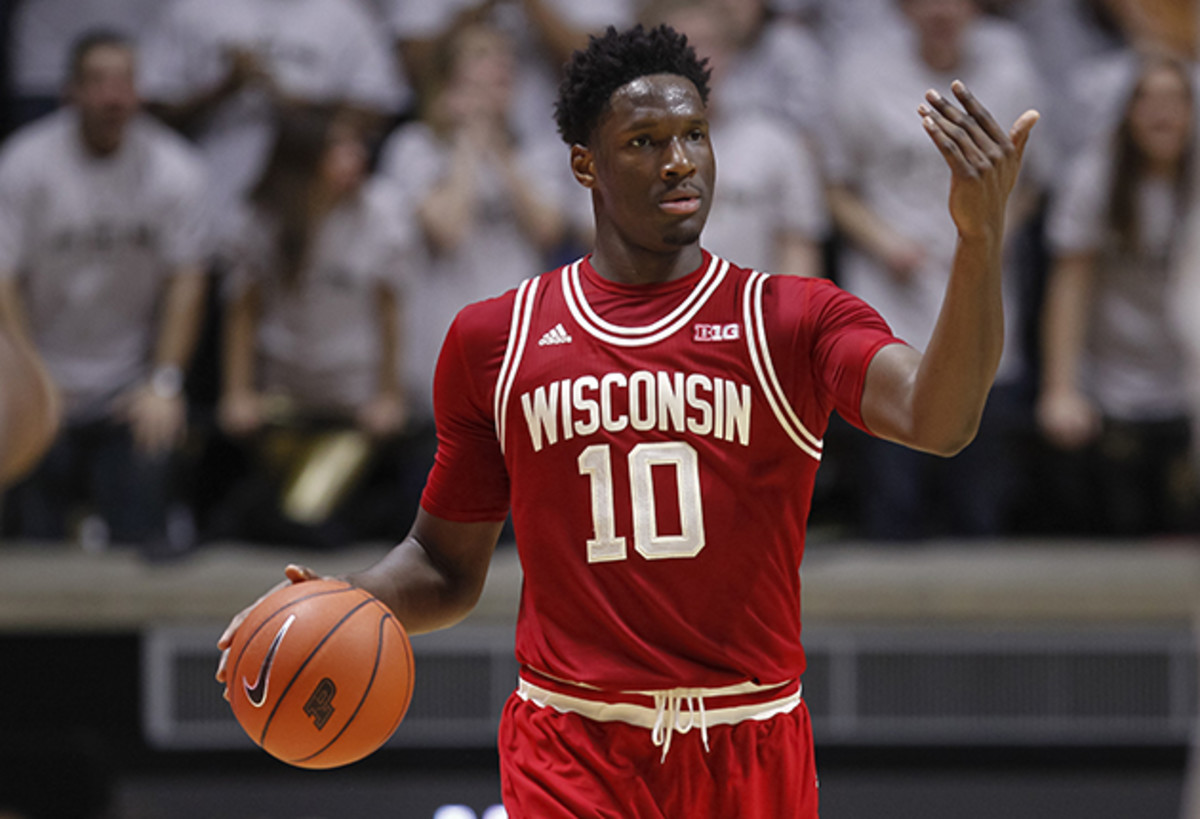
Nigel Hayes
School: Wisconsin
Class: junior
Height/weight: 6’8’’/240 lbs
Position: power forward
SI.com Mock Draft 1.0: N/A
Last season Hayes was a complementary piece in a lineup featuring two first-round draft picks, including the National Player of the Year (Frank Kaminsky and Sam Dekker). This season he’s the engine that powered one of the most remarkable turnarounds in college basketball, as Wisconsin morphed from a .500 outfit under the charge of an interim coach with an uncertain future to a tourney lock that clinched yet another top four finish in the Big Ten. Hayes is a dynamic scorer whose length and mobility could be put to good use against small-ball lineups. Hayes’s efficiency dipped in 2015–16, but it’s unlikely he’ll serve as the top scoring option for an NBA team.
When operating alongside Kaminsky and Dekker in 2014–15 (and posting a usage rate six percentage points lower than this season), Hayes ranked in the top eight in the Big Ten in True Shooting Percentage and Offensive Rating while sinking 40% of his threes. With opponents devoting more defensive attention to Hayes in 2015–16, he connected at a lower clip overall, but Hayes made up for the slippage by frequently getting to the line (61.8 free throw rate in Big Ten play) and cashing in once there (76.5%).
Demetrius Jackson
School: Notre Dame
Class: junior
Height/weight: 6’1’’/201 lbs
Position: point guard
SI.com Mock Draft 1.0: 14
Jackson spent last season sharing a backcourt with a first-round pick in the 2015 draft, Jerian Grant. This season he’s powering a Notre Dame team that led the ACC in adjusted offensive efficiency during conference play while potentially establishing himself as a better prospect than Grant. However, for Jackson, there was an adjustment to be made as a junior. With Grant in the NBA, Jackson would attract more attention as the centerpiece of opponents’ defensive game plans. While taking on a larger share of the Irish’s playmaking and scoring, Jackson shot a lower percentage and gave the ball away more often.
Still, Jackson has shown he’s a good shooter (42.9% on threes in 2014–15, and 80% on free throws in 2015–16), competent driver, savvy distributor (5.7 assists per 40 minutes, adjusted for pace, in 2015-16) and tenacious defender. Providence star Kris Dunn is widely regarded as the top point guard prospect in this class—SI.com has him pegged fifth overall in its Mock Draft 1.0—but an NBA team shouldn’t fret over the prospect of having to settle for Jackson a few picks later.
• Golden Season: Covering the Warriors’ pursuit of 73 wins
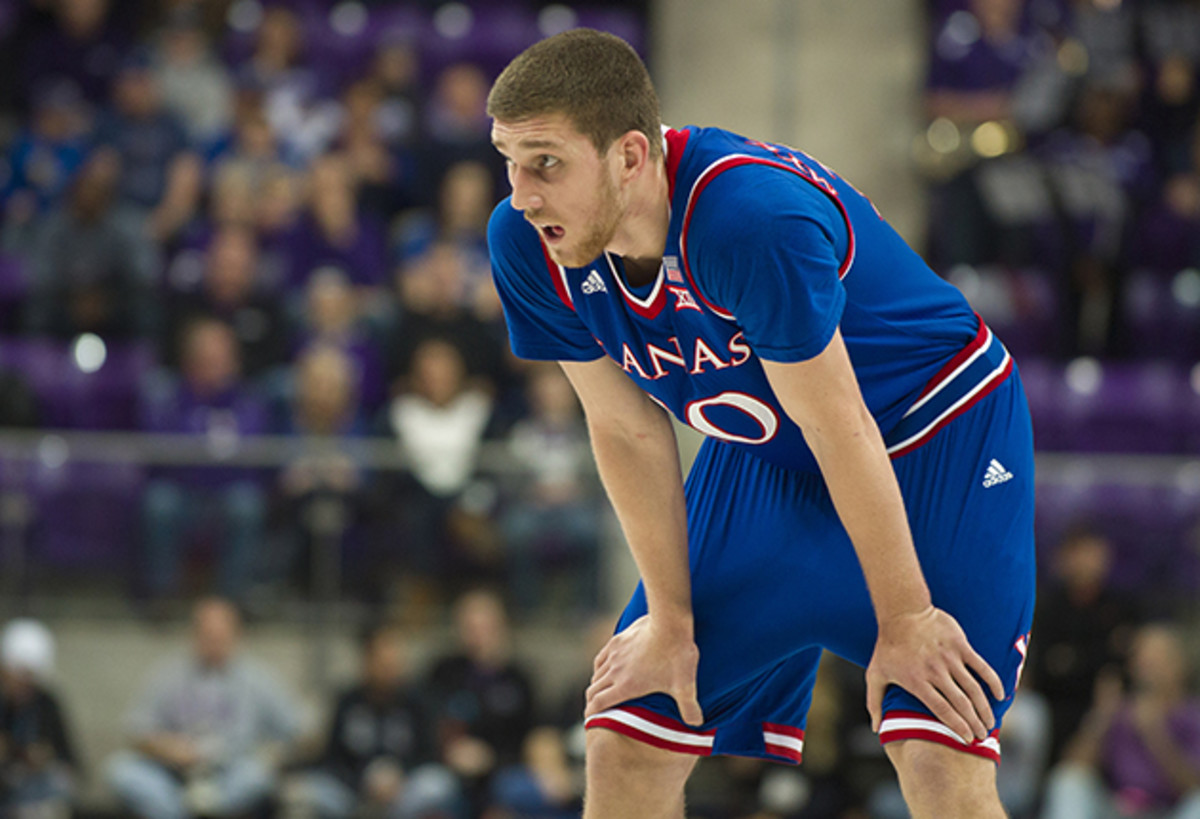
Sviatoslav Mykhailiuk
School: Kansas
Class: sophomore
Height/weight: 6’8’’/195 lbs
Position: shooting guard
SI.com Mock Draft 1.0:N/A
If you’ve watched Kansas play recently and are currently trying to figure out how an unfamiliar name made its way onto this list, don’t worry. Mykhailiuk hasn’t done much for the Jayhawks. He’s averaged only 4.1 points in 12.1 minutes per game over two seasons, and isn’t expected to play a major role in the No. 1 seed Jayhawks’ run in the tourney. But Mykhailiuk’s lofty draft status wasn’t built on college production. He’s played well enough in other settings—like the FIBA U16 European Championships, in which he averaged 25.2 points, 8 rebounds and 3.4 assists; and with the SK Cherkasy Monkeys of the Ukranian Superleague—to suggest he has a promising future in the NBA.
Mykhailiuk is an explosive athlete, he’s young (18), his scoring efficiency took a big leap from 2014–15 to 2015–16 as his usage rate increased and he showed some signs of improvement toward the end of the regular season, recording 17 points on 6-of-7 shooting (and 5-for-5 from three-point range) in 23 minutes of Kansas’s conference title-clinching win over Texas Tech on February 27. “He is on an uptick, no question,” Kansas coach Bill Self said afterward, according to The Kansas City Star.
Gary Payton II
School: Oregon State
Class: senior
Height/weight: 6’3’’/190 lbs
Position: point guard
SI.com Mock Draft 1.0: N/A
Payton II is the son of former NBA All-Star and Oregon State standout Gary Payton. Like “The Glove,” Payton II is an elite defender renowned for applying relentless ball pressure. He posted a Pac-12 high 4.1 steal percentage during conference play, ranked first in Defensive Box Plus/Minus among guards at 5.8 and tied for first overall in Defensive Win Shares. Payton II projects as a point guard, but he can check opponents anywhere on the perimeter because of his combination of athleticism and length (6’6.5’’ wingspan). Payton II is also an excellent rebounder for his position; he leads Oregon State in defensive rebounding percentage and all Pac-12 guards in boards per game.
Though shackling opposing ball handlers will be Payton II’s biggest strength at the next level, he’s made strides on the other end of the floor. This season Payton II’s three-point percentage ticked upward, he assisted on a higher percentage of the Beavers’ baskets and committed fewer turnovers. Payton II’s inconsistent jumper and age (23) will limit how far he rises on teams’ draft boards, but they may regret passing on a defender of his caliber. The next best move for Payton would be to get behind the nickname, “The Mitten.”
• MORE NBA: Kobe vs. LeBron: The rivalry that never happened
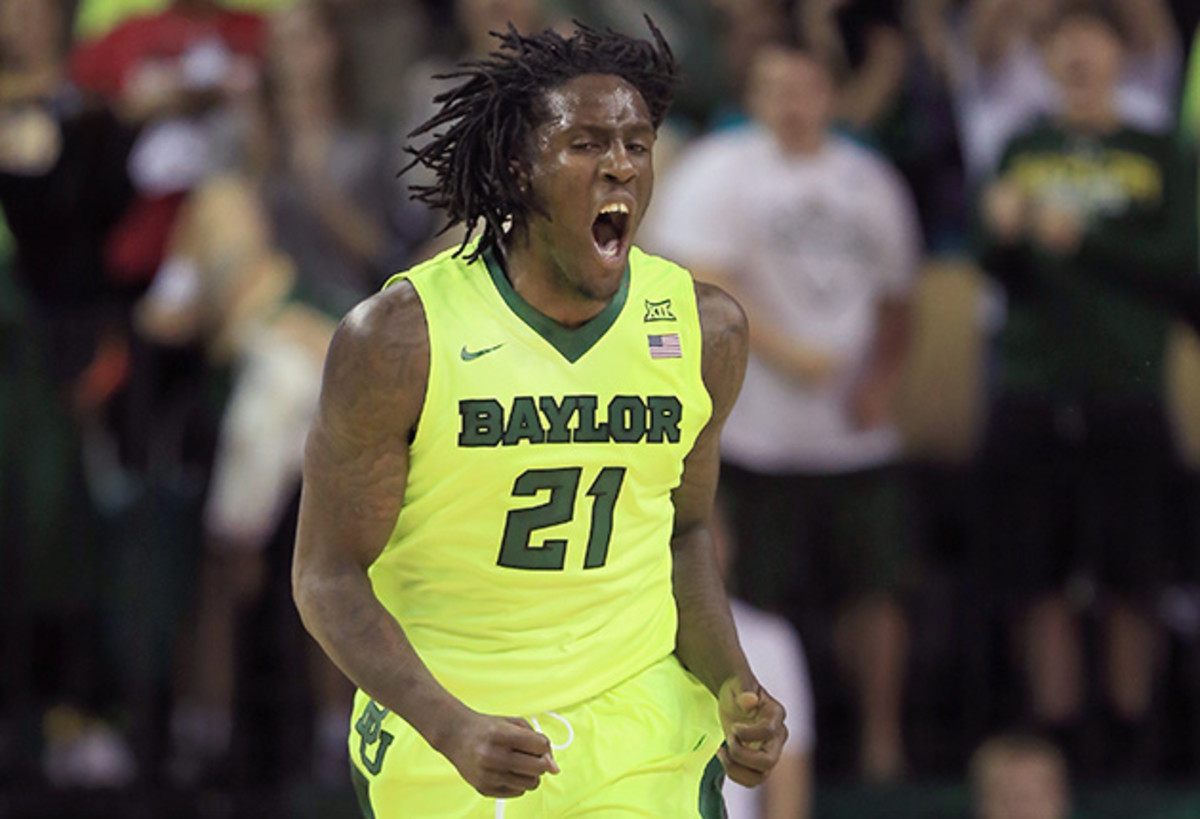
Taurean Prince
School: Baylor
Class: senior
Height/weight: 6’8’’/220 lbs
Position: small forward
SI.com Mock Draft 1.0: 18
At a time when NBA teams are placing a premium on wings who can make threes and defend on the perimeter, Prince represents an intriguing value play. With the salary cap set to spike this summer because of the influx of revenue from the league’s new television deal, Prince offers a 3-and-D skillset on a cost-controlled contract. Planning to open the checkbook for Kent Bazemore? Maybe just draft Prince and add another player in free agency with the money you saved instead? Of course, that line of thinking assumes Prince will make a smooth transition from the Big 12 to the professional ranks.
He may not, but here are some of the reasons why front-office types figure to be optimistic that he can: Prince possesses favorable length (6’11.5’’ wingspan) for his position, he’s relatively young for his class (21), he’s an attentive defender who excels at contesting shots on the perimeter and he can score off the catch or attacking the basket. Prince also has knocked down 37.3% of his threes the past two seasons, and in 2015–16 he’s made good use of improved free-throw shooting (64.4% in 2014–15 to 77.4%) by drawing an average of one more foul per 40 minutes.
Domantas Sabonis
School: Gonzaga
Class: sophomore
Height/weight: 6’11’’/240 lbs
Position: power forward
SI.com Mock Draft 1.0: 26
Sabonis hasn’t drawn as much attention in 2015–16 as he did last season, in large part due to Gonzaga suffering some surprising losses and nearly missing not the NCAA tournament. But don’t let the Zags’ poor form fool you: Sabonis, the son of former Portland Trail Blazers center Arvydas Sabonis, is playing better than he did as a freshman. With fellow big man Przemek Karnowski appearing in only five games because of a back injury, Sabonis has remained an efficient scorer while accounting for a larger share of Gonzaga’s offense and solidified his reputation as one of the nation’s best glass-cleaners.
Sabonis led the WCC in defensive rebounding percentage during conference play and also pulled down 10% of his team’s misses. He finishes well around the basket (76% in 2015-16), he converts free throws at a better rate (76.8%) than he did last season (66.4%) and he rates out in the 96th percentile of Division I in post-up scoring efficiency. Sabonis isn’t a serious threat from deep (only 12 three-point attempts over two seasons), but he’s athletic enough to defend stretchy power forwards and strong enough to provide resistance on the blocks.
• MORE NBA: Open Floor Podcast: Jimmy Butler | Is Ingram the No. 1 pick?
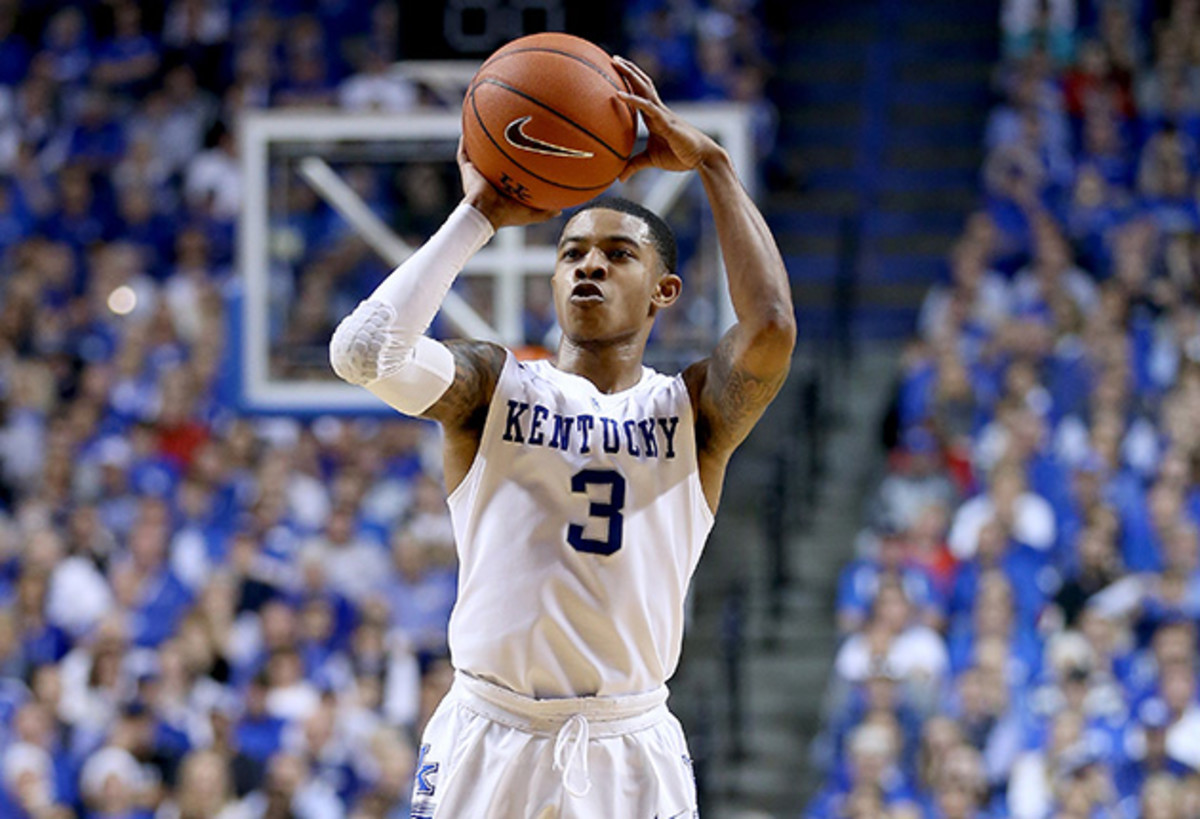
Tyler Ulis
School: Kentucky
Class: sophomore
Height/weight: 5’9’’/160 lbs
Position: point guard
SI.com Mock Draft 1.0: 29
Kentucky coach John Calipari said last week that, contrary to the popular belief a couple years ago, Ulis will not be a “four-year point guard” and should be drafted this year. That’s an extremely dubious proposition for most players with Ulis’s physical profile. In fact, there is one current NBA player who’s shorter than 5’10’’: Boston Celtics guard Isaiah Thomas, who was chosen 60th in 2011. Ulis looks likely to join the club in a few months, but how will he fare once he gets there? In two college seasons Ulis has evolved from a role player hampered by the perception that he was a recruiting backup plan to arguably the best point guard in the country.
Ulis was named SEC Player of the Year, SEC Defensive Player of the Year and tabbed a first-team All-America by SIthis season. He’s averaging 1.6 more assists per 40 minutes, adjusted for pace, than last season, he’s not turning the ball over as frequently and he’s earning more trips to the line and sinking a higher percentage of his attempts—all while logging the highest percentage of available minutes in the SEC (92.7%) during conference play. Ulis is the rudder steering a Kentucky team that lost seven players to the draft last summer, including top overall pick Karl-Anthony Towns.
Statistical support from sports-reference.com, kenpom.com, shotanalytics.com, draftexpress.com, synergysporstech.com, hooplens.com and hoop-math.com.
